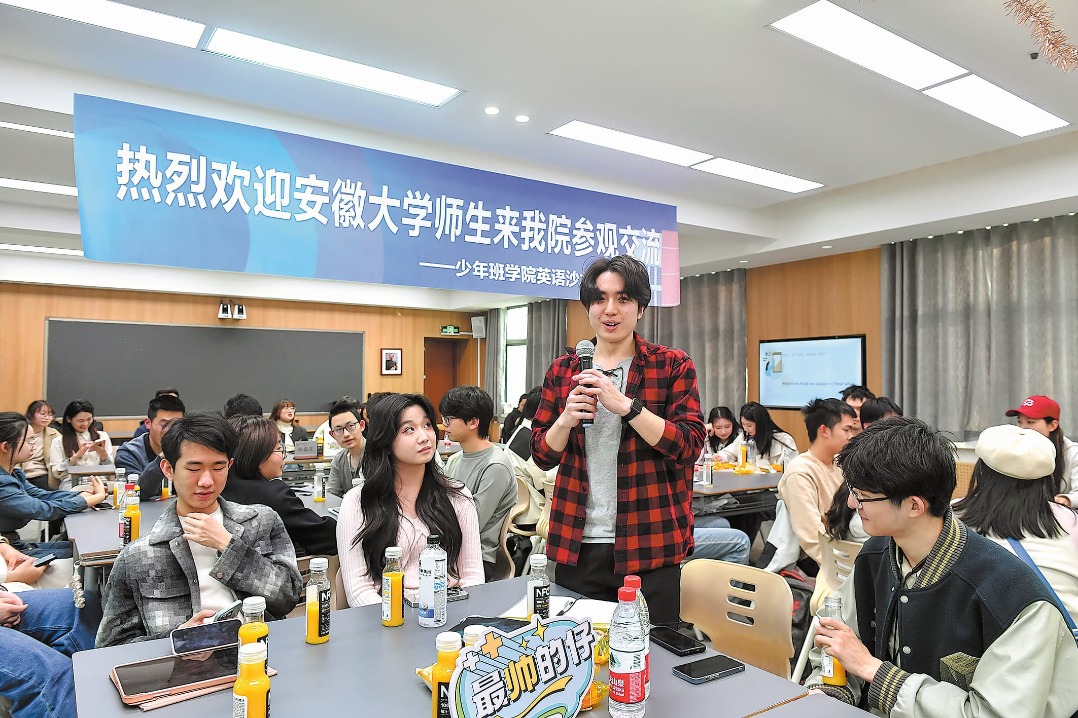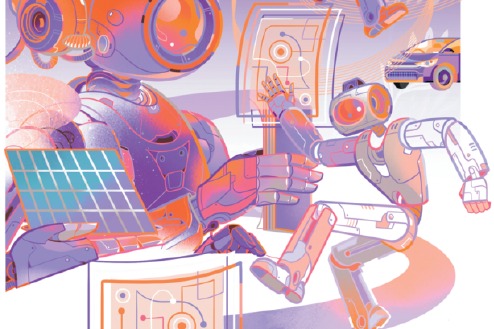Shock absorber
Promoting the development of agriculture, rural areas and farmers' livelihoods can help boost China's economic growth


The elimination of the disparity between urban and rural areas is an important requirement for common prosperity, and advancing rural-urban integration is essential to achieve this.
There is still a relatively large income gap between urban and rural areas. Although the gap has been narrowed over the past decade, the Gini coefficient of urban and rural residents is still higher than 0.4, indicating a high level of income inequality, and at least half of that comes from the urban-rural income disparity. The primary distribution process cannot completely solve the problem of income disparity, and redistribution is needed to significantly reduce the Gini coefficient while narrowing the urban-rural disparity.
Meanwhile, the inequality in access to basic public services between urban and rural residents is even greater than the income gap. For instance, the urban-rural disparity is reflected in the considerable gap in the social security of urban and rural residents. The nation's pension network covers about 1 billion people, including about 290 million people who claim pension benefits. However, 56.6 percent of the 290 million people are covered by the basic old-age insurance and pension system for both urban and rural residents, and the pension they receive accounts for only 5.9 percent of the total pension payments.
Also, incomplete urbanization reduces social mobility. The current household registration system has resulted in the urbanization process being incomplete, which in turn reduces social mobility. Insufficient social mobility is manifested in many aspects, and informal employment is an important one. Most of China's migrant workers, not being included in the urban household registration system, often find jobs on flexible payrolls. Being employed in the informal labor market means unstable jobs, low wages, inadequate social insurance coverage and little room for career development, which severely reduces social mobility, especially opportunities for upward mobility.
And, how will these problems affect China's reaching its economic and social development goals in the next 15 years? We need to take them into consideration with the challenges facing the Chinese economy.
China's population is aging rapidly, and responding to the impending second population shock is an important challenge.
China's population will peak around 2025, registering negative growth thereafter. This will be the second important demographic turning point, and will result in a new shock to the growth of China's economy from the demand side.
The shock will be manifested in three effects that are not conducive to household consumption. The first is that negative population growth inevitably means fewer consumers, which will lead to negative growth in consumption if other conditions remain unchanged. The second is a lack of spending power and tendency among the elderly due to their low incomes and lack of social security coverage, which makes it difficult for China to further boost its consumption. The third is the income distribution effect. A large income gap will lead to a lack of spending and excessive saving, since rich people are inclined to save more and the poor cannot always satisfy their desire to spend, which will inhibit China's economic growth from the demand side.
Currently, the pessimistic forecasts for China's economy by international institutions are mainly based on two aspects. First, from the supply side, with the aging of the Chinese society, the nation's future labor force will experience negative growth, weakening its economic growth potential. Second, the negative population growth in the future will hinder consumption, leaving the existing growth potential untapped.
In fact, the country can focus on both supply-side (labor supply) and demand-side (consumer spending) reforms to address the challenge of economic growth by eliminating the urban-rural disparity.
First, increasing labor productivity is the key. According to data from the World Bank, China's agricultural labor productivity-the output value of a farmer during a given period of time-is $3,830 per year, a level that is only 12 percent of the average level of high-income countries and even lower than that of upper-middle-income countries. To address this problem, we must rely on technology to increase the agricultural added value per unit of labor and reduce the labor force used per unit of output by enabling the transfer of the rural labor force to non-agricultural industries.
Second, labor transfer and urbanization can contribute to economic growth. Assuming that the proportion of labor force in the agricultural sector of the national total will reduce from 23 percent to 13 percent during the 14th Five-Year Plan period (2021-25), the labor supply to non-agricultural sectors can increase by 2.7 percent per year, which will increase labor supply by promoting labor transfer so as to raise the potential growth rate.
On the demand side, eliminating the difference between permanent residence and household registration can boost the urban population by 260 million. According to the estimates of the OECD researchers, after migrant workers obtain an urban household registration, or an urban hukou, their consumer spending can increase by 30 percent if other conditions remain unchanged. By continuing to promote the transfer of rural labor, and enabling more rural residents to move to urban areas, their spending can also increase by 30 percent. The new type of urbanization will greatly expand consumer demand.
Third, new financial means, technologies and products can solve many problems, including the cyclical problems caused by the fluctuation of pork prices. As agriculture is a relatively low-efficiency business and cannot generate incentives for innovation, it is important to encourage more enterprises to fulfill their social responsibilities, including advocating science and technology for the public good. The key is to create an incentive and atmosphere so that high technologies can serve agriculture, rural areas and farmers. This requires not only material rewards, but also a sense of social responsibility from enterprises.
To sum up, eliminating the urban-rural disparity is an important reform agenda in the next 15 years, a task the nation can neither avoid nor delay. These reforms can generate true dividends, and these dividends can serve as the impetus for development, helping to solve problems such as the source of funding and incentives.
The author is the chief expert of the National High-end Think Tank at the Chinese Academy of Social Sciences.

































